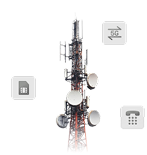
Introduction: The State of Omnichannel in 2025
Omnichannel retail is no longer a buzzword—it’s the baseline. In 2025, shoppers don’t just prefer consistency across channels; they expect it. According to the National Retail Federation’s 2024 report, 73% of consumers demand a seamless experience across in-store, online, and mobile touchpoints.
Yet behind the scenes, many retailers are still battling a quiet but costly problem: disconnected systems. Their POS, eCommerce platforms, CRM tools, and inventory systems operate in silos, making it nearly impossible to deliver on that promise of frictionless shopping.
In a world where BOPIS (Buy Online, Pick Up In Store), live commerce, and same-day delivery are becoming standard, retailers with fragmented systems are at a disadvantage. The result? Lost revenue, frustrated customers, and missed market opportunities.
The Risks of Disconnected Retail Systems
Disconnected systems are more than an IT headache—they directly impact sales, loyalty, and brand reputation. Here’s how:
1. Data Silos and Limited Customer Visibility
When POS, eCommerce, CRM, and inventory systems don’t talk to each other, retailers lose the ability to form a single customer view. Without unified data:
- Personalization efforts fail.
- Predictive analytics become unreliable.
- Brands miss opportunities to anticipate demand and upsell effectively.
Example: A shopper who frequently buys athletic shoes online might walk into a store, but without unified data, the sales associate won’t know their preferences, missing a chance to recommend matching gear.
2. Inventory Inaccuracy and Fulfillment Failures
Inventory errors are a silent profit killer. Disconnected systems lead to:
- Stockouts (losing sales when products are out of stock).
- Over-selling (promising items that aren’t actually available).
- Order cancellations that frustrate customers.
A 2024 MIT study revealed that poor inventory visibility costs global retailers $1.8 trillion annually in lost sales and excess stock.
3. Slow Adaptation to Market Changes
Retail is evolving at breakneck speed. Emerging models like live shopping events, BOPIS, curbside pickup, and ship-from-store require instant cross-system coordination.
When systems are disconnected:
- Rolling out new services is slow.
- Marketing campaigns can’t leverage real-time inventory.
- Competitors with agile systems seize market share first.
4. Increased Operating Costs
Maintaining fragmented systems means:
- Duplicate work.
- Manual reconciliations between departments.
- Higher IT maintenance costs.
As retail margins tighten, these inefficiencies aren’t just annoying—they’re unsustainable.
Industry Challenges for Omnichannel Retail
Even retailers that recognize the value of integration face specific challenges:
Integration isn’t just a technical challenge—it’s often a strategic labyrinth. Retailers typically juggle legacy ERP systems, disparate vendors’ platforms, custom point-of-sale solutions, and niche third-party tools. Getting these systems to communicate requires deep architecture work, ongoing maintenance, and future-proofing—not a one-time patch. Nearly half of retail tech leaders name this as their biggest barrier.
Symptoms of system fragmentation show up as:
- Inventory inconsistencies, like a product listed “in stock” online but sold out in-store.
- Disjointed loyalty tracking, making personalized offers ineffective.
These failures chip away at trust fast—shoppers expect fluid, consistent experiences, and even one misplaced promise can lead to lost loyalty.
3. Rising Labor and Operations Costs
Inflation and rising wages compound inefficiencies. Manual reconciliation across systems eats hours and profits. Inventory mistakes often result in rushed shipping, costly returns, and reactive staffing. In 2025, every manual process isn’t just a cost—it’s a lost competitive edge.
4. Cybersecurity Pressures
Disconnected systems widen the attack surface. Data flowing through ad hoc integrations—like CSV exports or email loops—can be vulnerable to breaches. Retailers must also align with regulations like GDPR, PIPEDA (in Canada), or CCPA. Without centralized data governance, compliance becomes both costly and unreliable.
The Role of Integration in Modern Retail
Integration isn’t just a tech upgrade—it’s the foundation of unified commerce. Done right, it transforms retail operations from reactive to proactive.
1. Unified Data & Personalization
Real-time access to centralized customer data powers hyper-personalization:
- According to McKinsey, data-driven personalization drives 5–15% revenue uplift in large retailers.
- Tailored cross-channel offers (“same items browsed online now available in-store,” “points redeemable anywhere”) strengthen engagement and lifetime value.
2. Real-Time Inventory Visibility
Seamlessly tracking stock across stores, warehouses, and online channels leads to:
- Fewer stockouts, more fulfilled orders.
- Built-in “endless aisle” capability—items available anywhere can be ordered and shipped, boosting conversion.
3. Seamless Fulfillment Models
Integrated platforms support modern fulfillment experiences:
- BOPIS, curbside pickup, same-day delivery, ship-from-store—the foundation is always real-time inventory and unified order orchestration.
- Retailers can dynamically route orders based on proximity, availability, and delivery speed.
4. Actionable Analytics
Integration turns data into agility:
- Instant visibility means retailers can optimize promotions, adjust pricing, or allocate stock in near real-time.
- Trends aren’t discovered after the fact—they drive ongoing operations and competitive advantage.
Real Brand Examples: Omnichannel in Action
To inspire, here are real-life cases that show omnichannel done right:
Sephora
- Unifies in-store and online behavior through its app and Beauty Insider profiles. Scanning barcodes connects you to reviews, shade recommendations, and tailored tutorials.
- Leverages BOPIS and same-day delivery via Instacart/DoorDash.
Glossier
- Uses RFID in pop-up and brick-and-mortar stores to track interactions and personalize shopping.
- Features AR tools and AI-powered recommendations both online and in-store.
- BOPIS, app-based profiles, virtual try-ons, and in-person beauty “guides” elevate the shopping experience.
IKEA
- The IKEA Place AR app lets shoppers virtually place furniture in their homes before purchasing.
- Real-time stock visibility in-app and flexible fulfillment (pickup or delivery) provide seamless cross-channel purchase paths.
Roadmap for Retail Integration Success
Achieving integration success isn’t about ripping and replacing everything—it’s about strategic, phased execution.
- Adopt API-First Architectures
- Design systems with APIs as the backbone.
- Enable flexible connections—legacy or modern systems—without full re-platforming.
- APIs make future enhancements easier and reduce vendor lock-in.
- Use Phased Integration Approaches
- Start with highest-impact functions: inventory, order management, and customer data.
- Roll out critical capabilities first (e.g., real-time stock visibility), then expand to promotions, loyalty, analytics.
- This phased approach reduces risk and delivers measurable value early.
- Prioritize Security and Compliance
- Build data governance from day one: encryption, access control, and audit trails.
- Align data flows with regional regulations (e.g., GDPR, PIPEDA).
- Practice secure API management, including token-based access and strict vendor oversight.
Conclusion
Disconnected systems are the silent saboteurs of omnichannel retail.
The retailers that will lead in 2025 won’t just have better products—they’ll have better connections: between systems, data, and customer experiences.
At Tellestia, we specialize in helping retail and ecommerce businesses modernize their integration infrastructure. Whether it’s connecting legacy POS systems, implementing real-time data flows, or adopting modern iPaaS solutions, we help you build a connected ecosystem that puts your customer at the center.
Reach out to our retail integration experts to see how we can transform your data landscape and elevate your customer experience.
FAQs
Q: What is retail system integration?
It’s the process of connecting platforms like POS, eCommerce, CRM, and inventory so data flows seamlessly—enabling unified commerce and advanced analytics.
Q: Why do disconnected systems hurt omnichannel retail?
They create data silos, cause inventory errors, disrupt fulfillment, and deliver inconsistent customer experiences.
Q: How can retailers improve inventory accuracy?
By integrating systems for real-time stock tracking across all channels and automating inventory workflows.
Q: What integration strategies work best in 2024–2025?
API-led integration, phased rollouts starting with high-impact systems, and working with certified integration experts.
Dinesh Kumar
Marketing Manager
Dinesh is a Marketing Manager at Tellestia, passionate about driving digital transformation and delivering client-focused solutions. He shares insights on technology, innovation, and business growth.
API Integration
Customer Experience
iPaaS
Omnichannel Retail
Retail
Retail Integration
Unified Commerce
























